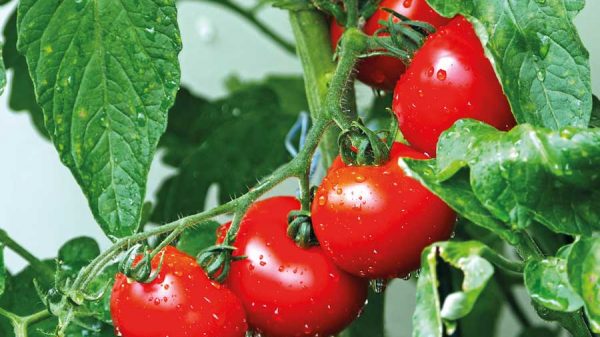It’s that time of year when we can expect warm sunny days but it seems the weather gods are having a clear out and have found all sorts of random bits of junk, wind, wet, cold and scorching sun which they are determined to throw at us. What they don’t realise is that we are used to it and will cope with whatever is sent along, we do love a good old moan about it.
Make the most of it I say and look for the positive, the rain will help the plants, the sun will ripen the fruit and the wind will blow off all the greenfly, there I feel better now.
There is always lots to do in the garden, turn your back and the grass puts on an inch or two and the weeds more like a foot or two, flowers fade and need to be removed to encourage more and as plants do their thing, don’t forget to give them the treat of a liquid feed as this will increase crops of flowers and fruit.
It is also the time of year when all our teachers take a well earned rest, after relentless efforts to channel the excitement and energy of our children into preparing them for their future ahead, I don’t envy them at all it must be quite a challenge at times. The down side is that many of us will have to entertain the children for a few weeks whilst trying to take a break from work too.
I remember as a child embracing the great outdoors during school holidays, quite happy spending time with friends in the local park burning off energy. Thankfully our open spaces are still vigorously defended and provide the space to burn off energy and meet up with others who share the same interests. You don’t need a passport or a wallet full of foreign currency, just amble down there with a picnic and take a breather from the chaos of daily life, who knows there may be an event or activity going on that will distract your offspring for a little while.
Back in the garden everything is growing and in the case of hedges they are beginning to look a little untidy so it’s time to give them a little trim. If you know that birds are nesting in your hedge its a good idea to check the young have flown the nest as the disturbance of hedge-cutting can disrupt them. Most hedge clippings at this time of year are quite soft so can be put on the compost heap, if they are a little woody it’s a good idea to put them through the shredder before putting them on the compost heap as this will speed up the composting process. It is also good to mix them with the grass clippings or have them in a separate pile and add a few fork-fulls after dumping your grass clippings on the heap. Grass clippings alone tend to stagnate and become a smelly unpleasant heap and are slow to make good compost, so mixing some coarse vegetation including trimmings from harvested vegetables will help air circulation in the pile and so help the composting process.

Once strawberry plants have finished fruiting they divert their energy to producing runners. Small plant lets on what appears to be a long string like stalk. These are a way of the plant increasing itself and each one has the potential of becoming a completely independent strawberry plant that will fruit for years to come. If you want to increase your strawberry bed or indeed give some away its a good idea to sink a small plant pot into the soil adjacent to your plant fill with a little good garden soil or old potting compost and peg the little plant down using a short piece of bent wire. The plant will root quickly and in about two to three weeks you can cut the long straggly stem releasing it from the mother plant, lift the pot out of the soil and either give it away or replant it where you want them for next year. Ideally strawberries should be replanted every three to four years, discarding the older plants which will now be exhausted and replacing them with newly propagated runners. If possible choose a new part of the garden as this will help reduce pest build up and give the plants a fresh start.
Once our strawberries have fruited I give them a sprinkling of general fertiliser and remove any straggly leaves, and any runners as they develop so that the plant concentrates on building up a good crown. Only after three years or when I want more plants will I allow them to develop.
If the summer is dry I do water the strawberry plants occasionally as this will also help them build up and make a good strong plant for next year.

Biennials are a plant that germinates and grows in one year and then flowers the following year. As gardeners we have developed a process that tricks the plant and this is to sow them at this time of year in a separate part of the garden, using the same technique as for direct sown vegetables, a shallow drill and thinly sprinkled seed cover with a little soil and water. Once germinated and developed into a seedling with four or five leaves they can be lifted and planted out in a row spacing 15cm apart (6 inches) and allowed to grow on. Water in dry spells and these plants will slowly grow on and produce bushy plants that can be lifted and planted in their final flowering position in autumn after the summer bedding plants have finished or in groups amongst your mixed borders. Wallflowers, sweet williams, double daisies and forget-me-nots are some of the most popular and seed will be available from your local nursery or garden centre.
Happy Gardening, Martin
(Next month, summer pruning wisteria, lifting and storing onions, Christmas potatoes.)







